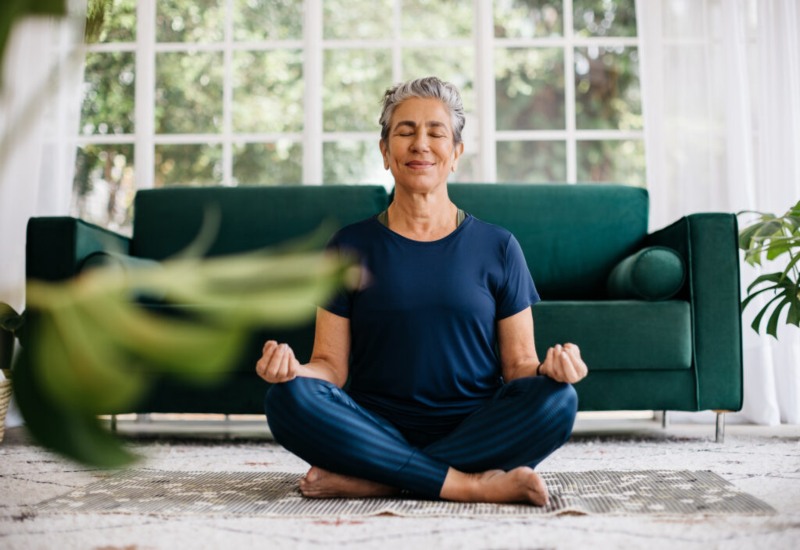How to Manage Varicose Veins with Yoga

How to Manage Varicose Veins With Yoga
Varicose veins are a common concern, especially for those who spend long hours standing or sitting. While medical treatments like sclerotherapy, EVLT, and phlebectomy procedures are highly effective, lifestyle approaches can also help manage symptoms. One such approach that’s gaining attention is yoga. But does yoga really help varicose veins, or is it just a wellness trend? But before we roll out a mat and start twisting into pretzel shapes, let’s break it down and explore how yoga for varicose veins can be beneficial.
Understanding Varicose Veins
Varicose veins happen when the little valves in your veins don’t quite do their job. Veins become enlarged, twisted, and filled with blood due to weakened valves. This can lead to discomfort, swelling, and a heavy feeling in the legs. While genetics, age, and lifestyle play a role, regular movement and circulation support can make a difference, which is how yoga can help. Think of yoga as a gentle pump for your veins. Yoga promotes blood flow and stretches the muscles that help push blood upward.
How Yoga Helps
Here’s what yoga does for your veins:
- Improves Circulation – Poses that elevate the legs or invert the body help blood return toward the heart, easing pressure in the veins.
- Reduces Swelling – Stretching and elevating the legs encourages fluid movement, especially after a long day on your feet.
- Strengthens Muscles – Yoga builds calf and leg strength, which supports venous function and reduces pressure on veins.
- Promotes Relaxation – Yoga’s mindfulness and breathing techniques lower stress, and lower stress = happier veins.
Yoga Poses That Really Make a Difference
Not all yoga poses are created equal for varicose veins. I like to think of these as the VIPs of vein-friendly yoga:
Legs Up the Wall (Viparita Karani)
This is a gentle pose where you lie on your back, rest your legs against the wall, and breathe. It encourages blood to flow back to the heart and reduces swelling. It’s great for anyone experiencing leg fatigue or pain.
Downward Dog (Adho Mukha Svanasana)
This is the classic pose you’ve seen in every yoga studio. You put your hips above the heart with your heels pressing down. Downward Dog stretches and strengthens the legs, calves, and hamstrings, and elevating the hips above the heart encourages blood flow back toward the heart, relieving pressure in the veins.
Mountain Pose (Tadasana) With Calf Raises
Stand tall, lift onto your toes, and slowly lower. Repeat. It’s a mini workout for your calves that keeps blood moving, especially useful if you’ve spent hours at your desk. Normalize doing this every couple of hours at work to keep your blood flowing.
Bridge Pose (Setu Bandhasana)
Lie on your back, lift your hips, feel your legs work, and enjoy that gentle compression. This one strengthens leg and pelvic muscles while nudging blood along in the right direction.
Warrior II (Virabhadrasana II)
This standing pose engages leg muscles and enhances circulation. It also improves balance and stability, which can be helpful for overall leg health.
Tips for Practicing Yoga Safely with Varicose Veins
You’ll want to focus on gentle movements and make sure to always listen to your body. Starting out:
- Avoid poses that put excessive pressure on the legs or involve deep inversions if you have severe varicose veins.
- Move slowly and focus on mindful breathing to maximize circulation benefits.
- Consistency beats intensity. Even short daily sessions can make a difference.
- Elevate when you can. Legs-up-the-wall moments throughout the day complement your yoga routine.
Yoga and Vein Health in Arizona
Being in Arizona has its perks: sunshine, walking trails, and that inexplicable love for iced coffee in 110-degree weather. Pairing outdoor activity with yoga creates a circulation-friendly lifestyle for your veins. While yoga helps, remember it’s a companion to medical treatments like sclerotherapy, EVLT, or phlebectomy procedures. Think of it as a tag team: yoga keeps veins moving, and our treatments address the underlying cause.
When to Seek Professional Care
If you notice swelling, pain, skin changes, or anything more serious, it’s time to reach out to the team at Arizona Vein and Laser Institute. Yoga for varicose veins can help ease discomfort. But it won’t replace a procedure when veins are severely affected. Early intervention makes a huge difference, and we’re here to guide you through it.
*Last Updated on 10/16/2025
